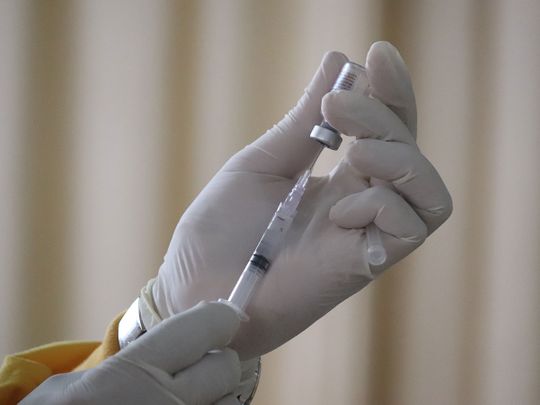
If you don’t know someone who has polio, smallpox or any other similar infectious disease, there’s one solid reason why – vaccines.
Click start to play today’s Crossword, where you can name an infectious disease that was eradicated because of proper inoculations.
Today, over two years after the COVID-19 pandemic broke out, over half of the world’s population (52.6 per cent) has been fully vaccinated against the coronavirus, according to statistics website Our World in Data. That approximately 4.1 billion people.
The fact that horribly pervasive infectious diseases in history have not made it through to this side of the century is because of the effectiveness of vaccines. It’s easy to forget how thoroughly immunisations work, because we haven’t lived through those events in history, and probably haven’t (in the case of smallpox) witnessed it with our own eyes.
Here are three times vaccines were a saving grace for humanity:
1. Smallpox
The infectious disease killed up to 30 per cent of people who caught it, and presented as a fever and progressive skin rash. As the only human disease that has been globally eradicated through vaccines, smallpox is also responsible for the first known vaccine, created by English physicist Edward Jenner.
In 1796, he found that milkmaids who caught cowpox, another disease that was far milder, seemed to gain immunity to smallpox. Jenner then inoculated an eight-year-old boy with a cowpox lesion from a milkmaid, and then exposed the boy to smallpox, in an experiment that would be considered highly unethical today. But Jenner knew he was onto something when the boy didn’t develop any symptoms of the deadly disease. Shortly after Jenner developed the vaccine, Spain used it to immunise people across its empire, and Britain and US soon followed.
2. Polio
Once one of the most feared childhood diseases for its ability to cause temporary or permanent paralysis, polio was eliminated in several countries through vaccination programmes. In the 1920s, it was so prevalent, even then US President Franklin D. Roosevelt caught it at age 39 and eventually was bound to a wheelchair. The paralysis it caused was so severe in some people that it could stop a person’s body from breathing – it led to many being placed in an “iron lung”, a type of mechanical respirator.
American virologist Jonas Salk came up with the polio vaccine. During the 1954 trials, parents rushed to sign up their children for the shot. The trials showed the vaccine was 80 to 90 per cent effective at preventing polio, and it was so effective that there have been no new polio cases in the US since 1979. However, it has still not been eradicated globally, and remains a health threat in Afghanistan and Pakistan, according to History.com.
3. Measles
A highly contagious respiratory disease, measles is a childhood infection that can be fatal for small children. A fever, runny nose, sore throat, inflamed eyes, and a skin rash are some symptoms of it. According to the Centres for Disease Control and Prevention (CDC), in the decade before 1963, when a vaccine first became available, nearly all children got measles by the time they were 15 years old. An estimated 500 people died and 48,000 were hospitalised each year, from measles, in the US.
In 1963, American scientist John Enders created the measles vaccine, which immediately brought down infections and death rates. The World Health Organisation (WHO) declared that the US was measles-free for the first time in 2000, due to the success of vaccination efforts. However, recent anti-vaccination sentiment has caused the re-emergence of measles outbreaks in the country.
What do you think of the effectiveness of vaccines? Play today’s Crossword and tell us at games@gulfnews.com.




